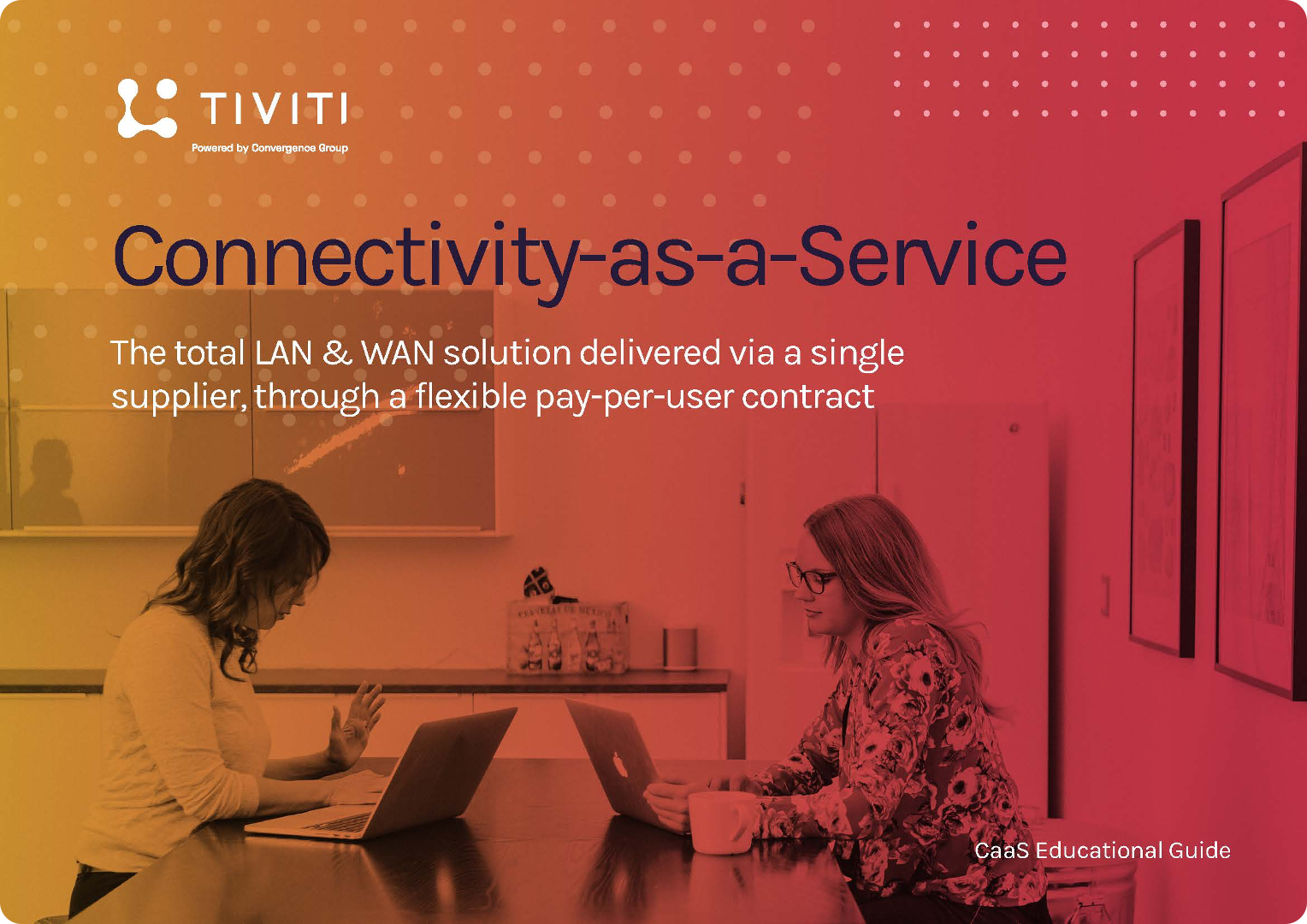Hybrid workforce: is SD-WAN still relevant for UK businesses?
A fundamental change in the way that businesses operate means a rethink around networking and connectivity is essential. But is SD-WAN the catch-all solution that many hype it up to be?
Find out how much you can save with Tiviti - click here to request a full quote.
Watch our latest webinar on 'unlocking social housing IT resource to focus on tenant value!'
More and more organisations of all sizes, across all industries, are looking for greater control over their IT landscapes, especially in terms of how they consume and how they pay for technology. For a number of years now, the trend towards service-based delivery models for technology applications and infrastructure has been growing exponentially.
According to a survey from Deloitte in February 2021, the pandemic has accelerated the adoption of Everything-as-a-Service (XaaS). XaaS reflects how companies across the globe are adopting the ‘as-a-service’ model for just about everything. 88% of respondents to the Deloitte survey said they believe XaaS will be crucial as their businesses recover from the pandemic.
There are a multitude of different sub-components of XaaS with the most prominent being SaaS (Software-as-a-Service) - which has very much led the way. The networking industry is however catching-up, with two relatively new concepts - Network-as-a-Service (NaaS) and Connectivity-as-a-Service (CaaS).
In this blog, we’ll explore the differences between these two options for network management, to help you understand which may be a better fit for your business.
In this guide we explore Connectivity-as-a-Service, a radically different approach to networking, focused on fast, reliable and secure connectivity.

Network-as-a-Service enables customers to rent networking services from a cloud provider. NaaS enables you to operate your own networks without maintaining your own networking infrastructure. Like other cloud services, NaaS vendors run networking functions entirely using software, essentially allowing you to set-up your own networks entirely without hardware. All you need is internet connectivity.
This gives companies the flexibility to adapt their network, spin-up new services as they need them quickly and relatively cheaply, right-size functionality and performance to their specific needs, and outsource day-to-day maintenance to their provider.
Network-as-a-Service avoids any requirement for major investment in hardware, and can be funded from operational expenditure as businesses only pay for what they use or need. As a result, NaaS is a popular choice among new businesses, as well as smaller enterprises for whom such an investment is beyond their reach.
However, it is gaining traction with larger businesses, too, which is why the global NaaS market is expected to grow by 35% over five years.
Alternatively, Connectivity-as-a-Service takes a total approach to network management. It incorporates all of the functionality of Network-as-a-Service with a commercial model that completely eliminates any hardware purchasing costs.
It also includes services like maintenance, voice and business mobile data within the subscription to create a single, complete package of technology for a business. CaaS goes further
The end goal of Network-as-a-Service and Connectivity-as-a-Service is ultimately the same: outsourcing network management to an expert third party who can ensure the reliability, scalability and security of the network. However, there are two important differences that separate the two approaches.
1) How it is delivered
Under a Network-as-a-Service model, delivery is fully virtualised, and the network is offloaded to a supplier to look after remotely. Connectivity-as-a-Service, on the other hand, still leverages traditional hardware where it’s needed (or where a customer still has hardware they want to use) as well as using the cloud.
2) The scale of what's possible
Only Connectivity-as-a-Service provides a full network management inventory and a commercial model that caters for existing infrastructure through network refreshes and buy-back schemes. In essence, Network-as-a-Service provides as-a-service network management, while Connectivity-as-a-Service provides a holistic approach to network management that encompasses a range of commercial and technological support services and resources.
It’s important to remember that every business is different, and so what might be right for others may not necessarily be right for you.
On one hand, Network-as-a-Service may be preferable if you are simply looking for network management that ‘works’, doesn’t cause you any hassle and allows a third party to take on the burden of looking after it.
But on the other hand, Connectivity-as-a-Service is the option that allows network management to be more closely integrated with the inner workings of a business, from how employees use devices every day, to the impact a network has on the overall bottom line.
Your decision depends on how central you consider your network to be to your business as a whole. If it really is critical, then Connectivity-as-a-Service should be your preferred option.
Learn more about how Connectivity-as-a-Service can help businesses stay in control of their networks and respond to the demands of modern business here.
A fundamental change in the way that businesses operate means a rethink around networking and connectivity is essential. But is SD-WAN the catch-all solution that many hype it up to be?
In business as in our personal lives, the way we procure the goods and services we need is changing like never before. From cars and furniture to white goods, more and more of us are paying monthly to access and consume products, instead of paying up front to own them outright. And more organisations are embracing the subscription model for their local area networks (LAN) too.
Between January 2019 and March 2020, there were between 130 to 178 domestic and cross-border mergers and acquisitions (M&As) by UK companies each month. These are major undertakings for any organisation, but they are full of promise if conducted correctly.
Tiviti can dramatically reduce the cost of network ownership. Just add your number of users, buildings and floors into our CaaS Calculator to see a typical monthly bill.